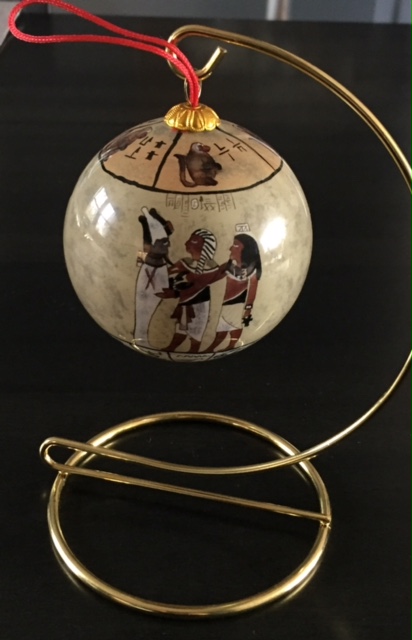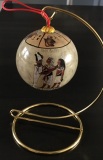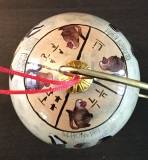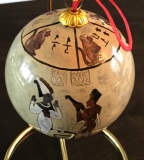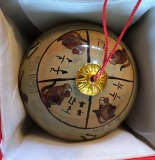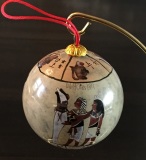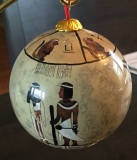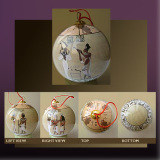- Ornaments
- >
- King Tutankhamun Burial Chamber Wall Ornament
SKU:
King Tutankhamun Burial Chamber Wall Ornament
$30.00
$15.00
$15.00
On Sale
Unavailable
per item
This design is taken from the wall behind the casket around King Tut’s mummy in the burial chamber itself. Only the burial chamber received decorations. On the west wall are scenes depicting the apes of the first hour of the Amduat the Book of the Secret Chamber. In this book the dead pharaoh travels through the underworld to the afterlife in his solar boat.
On the south wall the king is followed by Anubis as he appears before Hathor. Here, there is also a scene of the King being welcomed into the underworld by Hathor, Anubis and Isis. The north wall depicts the King before Nut with the royal ka embracing Osiris. On the same wall, we also find the scene of Ay performing the opening of the Mouth ritual before the mummy of Tutankhamen. In this case the person performing this duty is Ay, who became the next pharaoh The ritual allowed the mummy, to eat, breathe, see, hear and enjoy the offerings and provisions performed by the priests and officiates, thus to sustain the ka. On the east wall, Tut's mummy is depicted being pulled on a sledge during the funeral procession. Within the procession are two viziers to the king, and a third person who might be Horemheb. This design has been painted from the inside of the glass by skilled artisan. This ancient technique is achieved by special curved brushes that are inserted from the top hole. Egypt is our window to humanity's distant past and in understanding its history, we find mankind's greatest glories and achievements, as well as his often repeated mistakes. We may follow along with the building of empires, only to see them collapse again and again. We find great men and rulers of renowned, but we often also see their ultimate demise. We learn about religion, its evolution and, as the world grows older, its replacement with newer religions. Yet, the ancient Egyptian religion has never really completely died out. Even today, many Egyptians continue customs, including some aspects of religion, held over from thousands of years ago. In fact, throughout the world, aspects of the ancient Egyptian religion, particularly funerary, continue to make an impact on our modern lives. The designs of the neckwear are based on elements found on the coffins of king Tutankhamen. There is probably no more famous group of artifacts in the world then those associated with the discovery of young King Tutankhamen's tomb. Tutankhamen died as young as 16 or 17 years of age. He was probably a son of King Akhenaton by one of his secondary wives. His wife Ankhesenamun was daughter of Akhenaton and Nefertiti. Tutankhamen came to the throne as a young child and ruled for about nine years under the regency of Vizier Ay and the strong influence of the army commander Horemheb. The main events of his reign were to move the capital of Egypt back from El-Amarna to Memphis and to begin the transition from the monotheistic cult of Aton created by Akhenaton back to the polytheistic religion of Egypt with Amun-Ra again as the main God.

